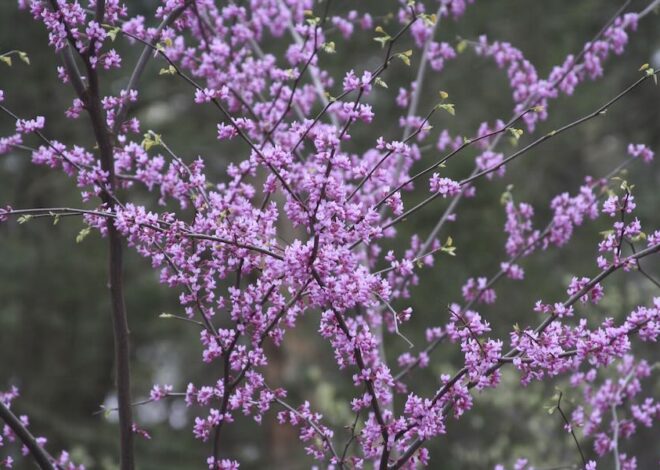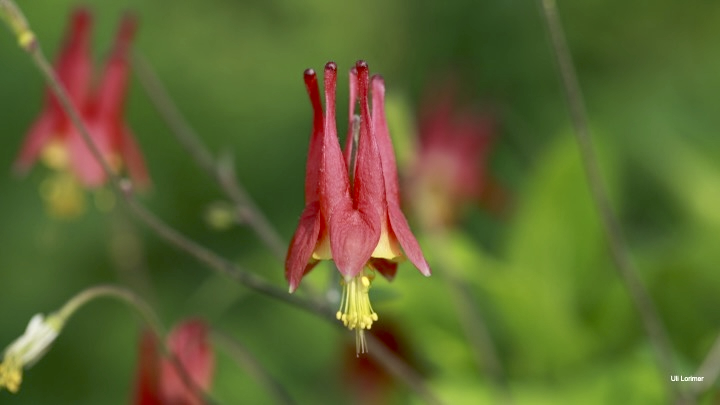
the state of the native-plant movement, with rebecca mcmackin
[ad_1]
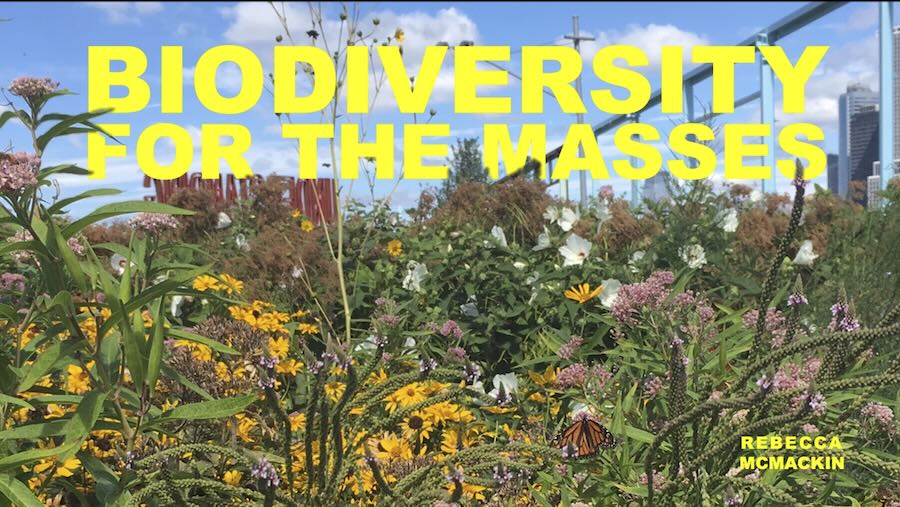 MAYBE MORE than another matter, utilizing native vegetation has continually figured among the many many excessive yard developments in latest instances. Merely how widespread is the movement in direction of a additional ecological focus in one of the simplest ways we design and take care of our landscapes?
MAYBE MORE than another matter, utilizing native vegetation has continually figured among the many many excessive yard developments in latest instances. Merely how widespread is the movement in direction of a additional ecological focus in one of the simplest ways we design and take care of our landscapes?
And the way in which does that effort maintain transferring forward and rising amongst these of us who’re residence gardeners when there shall be obstacles, like how onerous it could be to hunt out domestically acceptable vegetation on the yard center?
I talked about that and further with Rebecca McMackin, an ecological horticulturist who creates and manages dynamic landscapes, along with a model new yard she not too way back made for the Brooklyn Museum. Rebecca is presently the arboretum curator at historic Woodlawn Cemetery throughout the Bronx, and was a Harvard Loeb fellow in 2023, studying ecological design and the historic previous of native-plant actions. For a decade sooner than that, she was director of horticulture at Brooklyn Bridge Park.
Be taught alongside as you are taking heed to the Feb. 19, 2024 model of my public-radio current and podcast using the participant underneath. Chances are you’ll subscribe to all future editions on Apple Podcasts (iTunes) or Spotify (and browse my archive of podcasts proper right here).

 the native movement, with rebecca mcmackin
the native movement, with rebecca mcmackin
Margaret Roach: Sooner than we get started, I’ve to ask you, is your canine’s determine really Winterberry?
Rebecca McMackin: Certain [laughter]. Certain, it is.
Margaret: It’s like my favorite plant, the native Ilex verticillata.
Rebecca: He’s my favorite canine, so that works correctly.
Margaret: O.Okay Yeah, Winterberry. Hey, Winterberry [laughter]. And I moreover want to say you publish and likewise you do a publication that people subscribe to, which I on a regular basis love. You have gotten quite a few hyperlinks and ideas about native plant-related, ecological horticulture-related issues. Do you do that every month? Is that correct?
Rebecca: So my goal is every month. It doesn’t exactly come out every month, nonetheless that’s the hope that it comes out on each full moon. Nonetheless yeah, that shall be good. I really feel this movement, we’re all really finding out, and evolving, and altering rather a lot that it’s solely a method to gather all of the model new knowledge that comes out after which ship it out to people.
Margaret: So a little bit of backstory: Numerous weeks previously on the current, I talked with Nancy Lawson, a naturalist who goes by the determine of the Humane Gardener, and now we have been discussing a weblog and a social media put up she had carried out about sort of the detrimental language that people use about naturalistic landscaping, typically calling a entrance yard that’s not mown backyard, that’s like meadow-ish or one factor, they title it “overgrown” or “messy,” points like that. And the way in which we needed to start pondering and speaking differently.
And you purchased in touch with me after you heard that dialog. So that’s sort of the backstory of why we’re talking instantly. I assume it wasn’t the first time you’d ever heard such disparaging remarks [laughter]. Certain?
Rebecca: I suggest, language is so central, correct? We’re trying to shift people’s views proper right here. And for many individuals, this generally is a complete new technique of looking at gardens and landscapes. So, in reality, the language has to shift, and I beloved that dialog. I assumed it was nice, for what can we title the aesthetic that we’re going for? If it’s not overgrown, what are the constructive phrases? And there have been a complete bunch of suggestions on that put up.
Margaret: Certain.
Rebecca: Just a few of my favorites have been “lush” and “quite a few,” nonetheless I was questioning do you have to had any that you just thought really greater described that sort of panorama.
Margaret: I don’t know. I suggest, there have been so many who’ve been like… I don’t know, like, 400 or one factor people. We requested people to free-associate throughout the suggestions on my site. And yeah, it was nice. I suggest, I merely suppose “alive.” Nonetheless yeah, there have been plenty of good choices.
Rebecca: Yeah, I really beloved “pure” and “naturalistic.” I really feel these are such good phrases, nonetheless I’m super-nerdy, so I like “ecologically purposeful,” nonetheless I’m uncertain that one has broad attraction.
Nonetheless I really feel as soon as I used to be listening to you and Nancy, I saved on desirous about all of the phrases we don’t have, and the way in which that will really prohibit what we care about, and customarily even what we see as correctly. And it rang a bell in my memory of this realization that I had this fall as soon as I used to be working at Woodlawn Cemetery, which, as you talked about, it’s this 150-year-old cemetery that has presumably among the many best collections of Japanese maples throughout the nation.
And these Japanese maples are these gnarly, century-old beauties. And I was there on this stroll, they often have been merely on hearth, of their autumn glory. And beneath each one was a wonderful orange or pink carpet of leaves that was scattered throughout the headstones and offset the duvet. And the carpet added rather a lot to the overall incredible factor in regards to the tree and the setting. And as everyone knows, these leaves are so important ecologically, because of most moths and loads of butterflies spend an unlimited portion of their lives throughout the leaves. They often insulate the underside, and gradual water down, and help it infiltrate the soil.
So there are so many causes to depart the leaves, nonetheless considered one of many ones we not at all seem to talk about is magnificence.
Margaret: Certain!
Rebecca: And I’m pondering of those well-known photographs of ginkgos with fluorescent yellow leaves all through them. It’s like an aura. And what variety of native bushes we have who do the similar issue, like honey locusts and sweetgum, with their good leaf carpets. Nonetheless we don’t have a status for it. And so plenty of us don’t even see it and even acknowledge it as invaluable. And so I really feel we might like a status for that as correctly, for that fall leaf carpet.
Margaret: Equally, actually, now you’re going to get me free-associating off-topic. Nonetheless a buddy of mine, Marco Stufano, beforehand of Wave Hill yard throughout the Bronx, at petal-drop when the flowers would drop off the spring bushes like crabapples, as an illustration, he’d title it a pink puddle beneath the bushes, or pink pool. And I really feel that’s one different issue that plenty of cases individuals are like, “Oh, let’s rake it up. Let’s get that out of one of the simplest ways. Let’s get out the blower. Get the mess. Get the mess away.” Nonetheless it’s not a big quantity, is it?
Rebecca: It’s fully stunning. It’s considered one of many benefits of getting these vegetation in our panorama. And I really feel hopefully there are Japanese phrases for every of these, and presumably we’ll merely uncover these out and use them as correctly.

 Margaret: Certain, positive, positive. Yeah, the letting go, that’s sort of second that points have let go. I suggest, that’s really a necessary second.
Margaret: Certain, positive, positive. Yeah, the letting go, that’s sort of second that points have let go. I suggest, that’s really a necessary second.
So that you in all probability did a contemporary talk about that I watched for this educational group, this nonprofit often known as New Directions throughout the American Panorama [that talk will be given again Feb. 22, 2024, for Ecological Landscape Alliance]. And in that debate for them, you sort of referred to the difficulty in direction of a additional ecological technique to horticulture.
You often known as it a movement, nonetheless you had this sort of chart, this background, and there have been all these circles of assorted sizes on it [above], and each circle had a status, and it was like all these, I don’t want to say factions as if there’s warring amongst them, nonetheless fully completely different segments, so to speak, each that often known as itself one factor.
So this world of ecological horticulture, it’s all these fully completely different groups of people. It’s not one movement, or how do you see it?
Rebecca: I really feel broadly, it’s every. In any case, the reply is on a regular basis positive. It is every this big, world movement of tens of thousands and thousands of people that discover themselves trying to foster biodiversity in our gardens and on our land, in response to the ecological destruction that we’re seeing all through us. And that was considered one of many points that I had the good fortune to verify whereas I was at my fellowship, was to not solely analysis the historic previous and the standing of all these actions, nonetheless to attempt to work out how these of us doing this work proper right here instantly can cultivate in all probability essentially the most impactful, and far-reaching, and quite a few gardening actions attainable, and so there’s…
Utterly; I really feel it’s one movement. I might argue that it’s one movement, nonetheless that the multiplicity of the names for each explicit individual movement is unquestionably very helpful. I similar to the time interval ecological horticulture. That’s the time interval I’m most comfortable with. I really feel it’s appropriate. I really feel it’s pleasing to say, and it captures the extent of sophistication required to do plenty of this work. I’ve moreover heard critiques that it’s too fancy; that it could be unwelcoming or elitist. And I really feel that’s an awesome argument for the time interval ecological gardening, which will also be extremely regarded and seems to be additional inviting.
Margaret: And on that chart, as I said, with all these fully completely different circles on it in your presentation, there was conservation gardening, and permaculture, and regenerative gardening, and rewilding, and the New Perennial Movement, wildlife gardening, a bunch of various ones. The one which I on a regular basis say that wasn’t on there, it’s probably not thought-about by many people: I contemplate it as habitat gardening or habitat-style gardening. Have you ever learnt what I suggest?
Rebecca: I adore it. Yeah, I really feel it’s beautiful, correct? And I really feel there’s an precise question of whether or not or not or not it helps this movement. I really feel what all of us want to do is develop this movement as giant and as sturdy as attainable. Does it help us to pick one time interval, or is it greater to solely have all of these phrases proliferate so that there shall be one time interval {{that a}} neighborhood in southern Texas decides to undertake and develop, after which one different neighborhood in northern Maine can decide to create?
There’s an precise magnificence in that vary as correctly, fairly than merely choosing one movement. And likewise, I really feel considered one of many benefits of getting so many alternative names is that it’s not one singular growth that will then exit of favor.
Margaret: Correct, correct.
Rebecca: I hope that this movement really turns into what horticulture is larger than one thing. That it’s not merely one factor that we’re all doing correct now because of hip, and that one factor else goes to return again up ultimately.
Margaret: Correct. So irrespective of we do or don’t in the end come to call it [laughter], how giant is it, and what’s sort of the attain now? On account of in your newest talk about, I was very to see that you just had dug into what information is obtainable available on the market, and likewise you equipped a kind of overview of the evaluation that tries to estimate the size of this movement. So what have been quite a lot of the highlights?
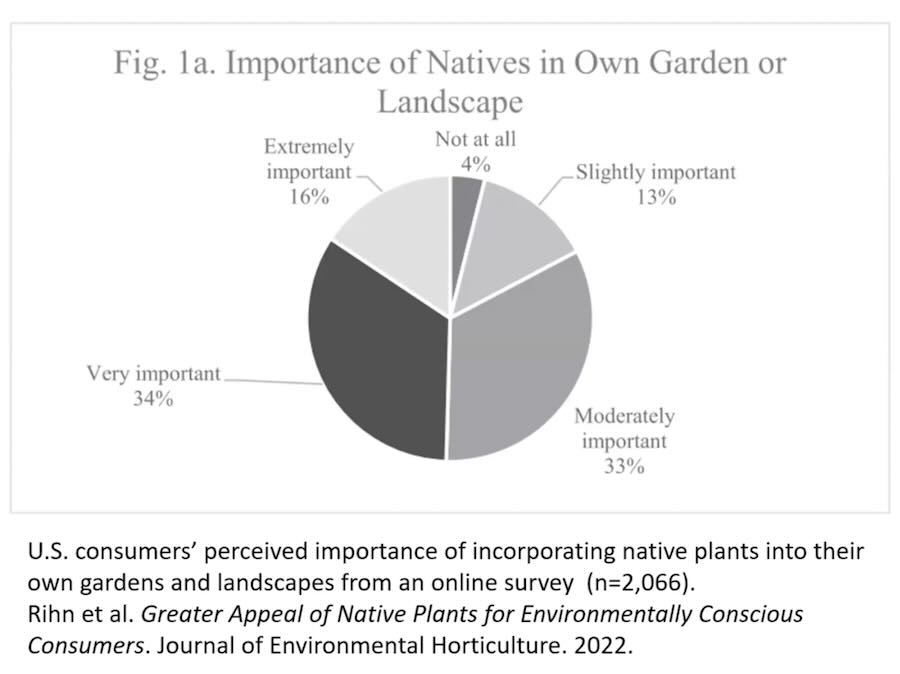
 Rebecca: Successfully, I really feel, really, I was totally shocked to study the way in which widespread it is. I really feel plenty of us have been working for a few years to attempt to speak to people how important this work really is. And as soon as I dug into the evaluation, I found that we’re really succeeding. That correct now, primarily based on the Nationwide Gardening Survey, 55 % of U.S. households yard. That’s larger than 185 million people. And that’s principally because of there was this huge wave of latest gardeners with Covid. There was larger than 20 million gardeners who merely started gardening for the very first time over Covid lockdown. They often’re youthful, and further quite a few economically and ethnically, they often’re additional occupied with pure farming and all of those environmental points that we recurrently take into accounts.
Rebecca: Successfully, I really feel, really, I was totally shocked to study the way in which widespread it is. I really feel plenty of us have been working for a few years to attempt to speak to people how important this work really is. And as soon as I dug into the evaluation, I found that we’re really succeeding. That correct now, primarily based on the Nationwide Gardening Survey, 55 % of U.S. households yard. That’s larger than 185 million people. And that’s principally because of there was this huge wave of latest gardeners with Covid. There was larger than 20 million gardeners who merely started gardening for the very first time over Covid lockdown. They often’re youthful, and further quite a few economically and ethnically, they often’re additional occupied with pure farming and all of those environmental points that we recurrently take into accounts.
Nonetheless what as well as they current in 2021 is that one-third of all U.S. adults had deliberate to purchase vegetation to help wildlife, which to me is a totally ridiculous amount of people. {{That a}} full quarter of the U.S. inhabitants was searching for native vegetation notably. That’s larger than 80 million people. And truly, I couldn’t think about that. Nonetheless then I found one different tutorial analysis that put the numbers even bigger. They found that 58 % of gardeners had purchased native vegetation throughout the earlier yr, which is able to get us to 107 million people, which is definitely one-third of the U.S. inhabitants.
So it’s mind-boggling, really, how mainstream this movement is and the way in which prolonged and the way in which onerous it’s taken so many people to get proper right here, however it’s really succeeding, really.
Margaret: Yeah. So what you moreover recognized in your talk about is that supporting pollinators was the best motivator for people to current home to native vegetation and make completely different lodging of their gardens, their residence landscapes. And so, plenty of residence gardeners, that’s what we’re pondering of as soon as we make a plant purchase, or we alter part of our design, or add a attribute, or subtract a attribute, or irrespective of: It’s about pollinators. Is there a a lot larger picture that you just’d like us to contemplate? I suggest, versus that, is that too slender?
Rebecca: I really feel the attention on pollinators is de facto nice. It’s great, and it’s beautiful, notably I actually like to contemplate flowers as methods of communication. I actually wish to have the flexibility to study flowers and take into accounts who they’re calling to and what these relationships are. It’s great how rather a lot people love pollinators, and it’s such a good way to see and illustrate the importance of native vegetation.
That said, it’s not practically feeding bees, correct? It’s not practically using these vegetation to feed animals. It’s important, in reality, the dynamics between organisms is what this work is de facto about, nonetheless there’s moreover one factor important regarding the vegetation themselves, that I suggest, they developed proper right here. They developed on this land. I see to a positive diploma, I actually really feel like I’m on their land, and I actually really feel like we’ll make home for these vegetation on our land, whether or not or not or not they’ve these pollinator dynamics or not. I really feel it’s… Now we have to ship the plant once more to the center of the dialog, along with the pollinators.
Margaret: So not merely the animals, yeah. And it’s one giant meals chain, so each means, one helps the alternative. Nonetheless yeah, I keep in mind years previously interviewing a person who was very expert in ferns, from the earlier New England Wild Flower Society. And she or he was saying to me, ferns don’t flower—clearly, they don’t flower—nonetheless that doesn’t suggest they don’t contribute. They’re monumental contributors to the environment because of they, as an illustration, switch into an space that is disturbed, as an illustration, or damaged not directly. They moved in early. They often keep the underside, they often current hiding places.
And so, as soon as extra, I contemplate habitat. So regardless that they’ll’t feed any pollinators, they’re really important vegetation, correct?
Rebecca: I actually like that point interval, habitat. I really feel it’s such a good way to contemplate it. And I really feel it’s moreover merely really important to don’t forget that the info that we have regarding the methods through which vegetation, and animals, and fungi all work collectively is so nascent, and such a tiny portion of what’s actually taking place on the planet. And even as soon as I take into accounts this over the previous decade, the evaluation that’s been carried out into the chemistry of nectar and pollen and all the subtle relationships therein, there’s a kind of hubris to suppose that when you see a bee on a flower that is sufficient, that subject is checked or we’ve carried out the work ecologically to take care of this ecosystem.
There’s rather a lot additional taking place that pollen could not have the correct nutritional vitamins. It could want chemical substances that are harming, really, that bee that’s accumulating on it. After which there’s more likely to be native vegetation spherical that aren’t getting pollinated because of that bee is sitting on that flower, so it’s such a… We would not at all know is the aim. We not at all can say that that’s sufficient. And so why not default to solely attempting on the vegetation that developed spherical us, attempting on the animals that developed proper right here, and have relationships with these vegetation, and trying to encourage these communities?

 Margaret: Correct. Successfully, so speaking of nectar and pollen, all through your talk about, you suggested some tales about just some native vegetation. And truly, you really useful throughout the talk about that—and this was to a gaggle of execs throughout the enterprise—you really useful that telling tales about native vegetation may help to catch customers’ consideration, and educate, and really be a part of people additional deeply to the vegetation.
Margaret: Correct. Successfully, so speaking of nectar and pollen, all through your talk about, you suggested some tales about just some native vegetation. And truly, you really useful throughout the talk about that—and this was to a gaggle of execs throughout the enterprise—you really useful that telling tales about native vegetation may help to catch customers’ consideration, and educate, and really be a part of people additional deeply to the vegetation.
And in addition you suggested a story about columbine, about Aquilegia, about our native columbine. You suggested quite a few them, nonetheless that one notably charmed me. [Columbine above by Uli Lorimer.]
Rebecca: Oh, I suggest, I really feel tales are so important, correct? They’re how we examine our world, they often get caught in our head, and we’ll go them alongside. And so as soon as I take into accounts the vegetation that I keep in mind from as soon as I used to be little, they’re the vegetation that I heard tales about. They’re similar to the buttercup that suggested my sisters within the occasion that they appreciated butter, or the Queen Anne’s lace with the central drop of blood throughout the heart. These have been the vegetation that I might share that knowledge with completely different people.
And I really feel that we have these self identical tales with the native vegetation spherical us as correctly. Inside the Northeast, we have jewelweed seedpods that explode in in all probability essentially the most nice attainable means. And we have mountain laurel stamens that, after they’re triggered, they spring out from a sticky circus tent to bop bumblebees on the once more. These are merely unbelievable tales.
And the one which I really love, that Aquilegia canadensis one, I really feel, because of it as soon as extra illustrates the beauty of that relationship between animals and vegetation. And so one of the simplest ways that I like to tell that story is, in reality, all people can picture this cheerful little pink bell hanging from a inexperienced skinny stem. And I really feel that they’re in all probability essentially the most cheerful of our spring wildflowers, nonetheless, in reality, they’re not flowering for us.
Their bloom heralds the return of the ruby-throated hummingbird, the East Coast’s solely hummingbird. After these tiny birds have flown 1000’s of miles on their migration from Central America to the Northeast, they rely upon the sugary nectar of the pink columbine to refuel. They often have goal to think about that that flower will in all probability be prepared for them after they arrive. The columbine outlets their nectar on the end of prolonged spurs, the place solely the prolonged tongues of the hummingbird can attain it.
As a result of the birds drink the nectar, they pollinate the flower. Every organisms revenue, and in actuality, the hummingbird is the pink columbine’s pollinator companion. The rooster and the flower could not be additional charming, however it’s throughout the dynamics between the two the place the precise magic resides. Birds have a further photoreceptor that lets them see pink extraordinarily correctly, whereas bees can’t. Flowers have taken good thing about this and use the color pink to talk, which is why virtually every pink flower you see is bird-pollinated. So as the ruby-throated hummingbird flies over land on their journey, a wave of pink flowers blooms to greet them.
And I really feel that that is merely this little pretty bundle deal that mainly reveals this beautiful dance of symbiosis that’s going down all through us, amongst vegetation and animals which have developed collectively for 1000’s, if not tens of thousands and thousands, of years. And the way in which, as soon as we plant native vegetation, we get a front-row seat to the wonders of the pure world. And I really feel tales like that, that’s just one, that’s a tiny little story. We’re in a position to all collectively uncover these tales and study to tell them, and that mainly opens people’s eyes to what’s taking place of their backyards. After which, in reality, how important this work really is.
Margaret: Certain. So, the place do I get that columbine [laughter]? So, as I said throughout the introduction, even these of us who want to re-landscape or rethink a number of of our place with a additional native-centric focus, typically it’s not easy because of… And notably do you have to retailer at a big-box retailer and likewise you go in and all they’ve, as you said in your talk about that I watched, cultivars upon cultivars of Echinacea, of coneflowers, nonetheless not an entire lot else to flesh out the place that we’re imagining, this—as soon as extra, habitat is my phrase. Sourcing is often a precise obstacle, and I don’t know how you encourage people to get earlier that. I suggest, I’ve my crazy methods that I sort of preach, nonetheless any choices?
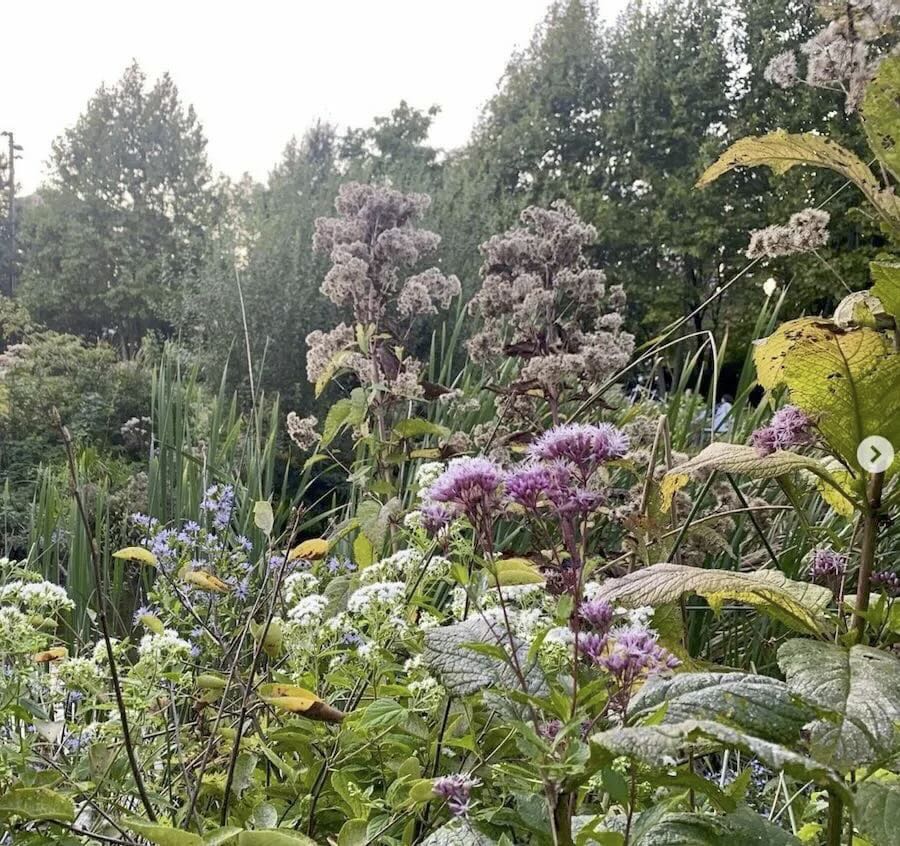
 Rebecca: Constructive. I suggest, I really feel that’s the Primary question correct now, is how can we take all of these excited, ethical people and switch them from these very introductory practices like searching for Echinacea cultivars at subject outlets and doing No Mow Would possibly, and the way in which can we help them alongside a trajectory that can get us all into genuinely ecologically useful work, the place they is more likely to be desirous about altering elements of their backyard, or using straight species, and native vegetation that are grown with out harmful chemical substances?
Rebecca: Constructive. I suggest, I really feel that’s the Primary question correct now, is how can we take all of these excited, ethical people and switch them from these very introductory practices like searching for Echinacea cultivars at subject outlets and doing No Mow Would possibly, and the way in which can we help them alongside a trajectory that can get us all into genuinely ecologically useful work, the place they is more likely to be desirous about altering elements of their backyard, or using straight species, and native vegetation that are grown with out harmful chemical substances?
And I really feel it’s really about caring for land larger than one thing, however it’s a really onerous question, because of vegetation are so restricted. Discovering these vegetation shall be so restricted, nonetheless there’s unimaginable nurseries on-line. Nonetheless I really feel the precise question is knowledge: How can we get people the info that they need? And thank goodness, there are so many good people and organizations doing this work like your self, Margaret, in reality.
Margaret: Oh, correctly…
Rebecca: Critically, considerably, correct? Taking individuals who discover themselves occupied with gardening and serving to them uncover the property that they need to switch even further into the apply. Related with people like Jennifer Jewell, and Thomas Christopher, and Joe Gardener [Joe Lamp’l]. They’re using their platforms to educate and encourage people.
I really feel plenty of us would possibly presumably even take a additional energetic place in mentorship, and neighborhood education, and gardening golf tools, nonetheless merely the simple points. I really feel there’s groups like Wild Ones which were available on the market, correct? There’s chapters throughout the nation now, and individuals are individuals who discover themselves moreover actively doing this work. And by no means solely can you get knowledge, you can actually get vegetation, correct? You don’t have to be searching for vegetation frequently. You may be dividing, and sharing, and starting vegetation from seed with Wild Ones.
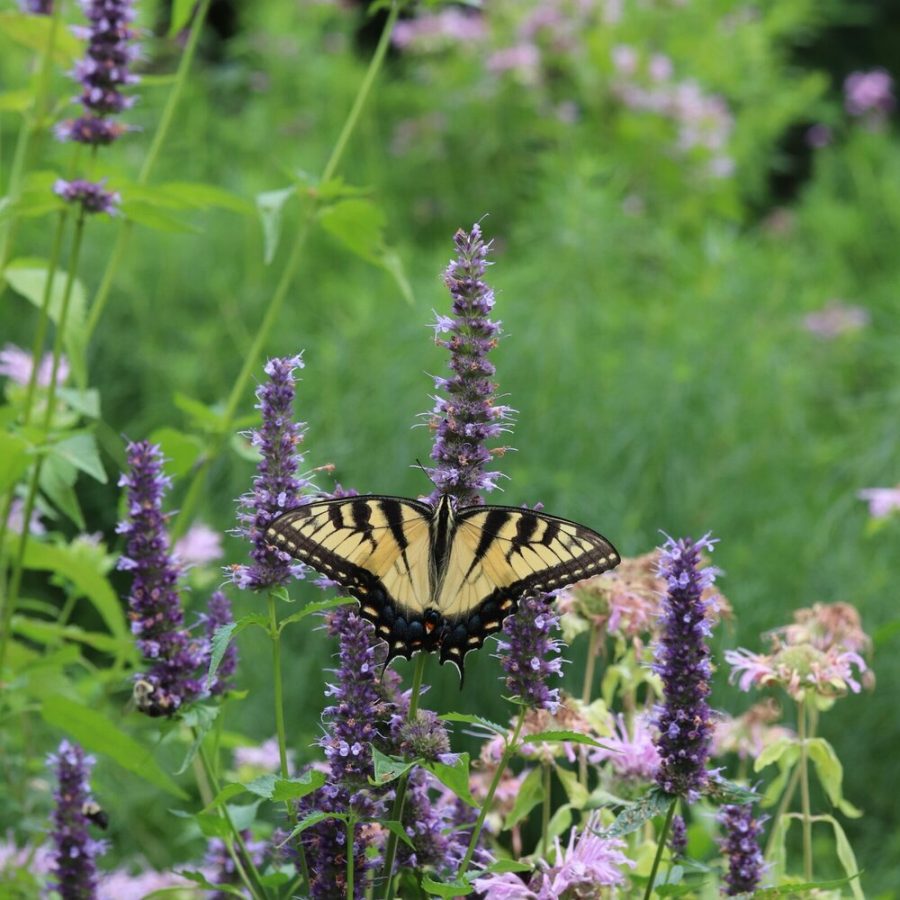
 Margaret: Yeah, and I really feel Wild Ones, do you have to’re anyplace near a chapter, positively to avail your self.
Margaret: Yeah, and I really feel Wild Ones, do you have to’re anyplace near a chapter, positively to avail your self.
Thought-about considered one of my completely different methods, which is additional digital at first, is that you just really uncover your native group or your native plant society by going to NANPS.org, which is North American Native Plant Society.org. They often have a list of, in every Canadian province and every state throughout the nation, what the native plant society is, or typically there’s a number of. And do you have to click on on on the one—do you have to’re in Illinois and likewise you click on on on the Illinois one—and you then undoubtedly go to that site for Illinois, thought-about considered one of their navigation buttons on their site, goes to be property, and it’ll be like seed exchanges amongst completely different members, or nurseries they counsel in Illinois, or it’ll inform about hyper-local property.
So that you just’ve purchased to hunt out like-minded people in your house, whether or not or not by the use of one factor like Wild Ones or an area plant society in your house. So I really feel these are literally, really helpful strategies to get started.
After which to review to develop from seed moreover. That’s really important. And even winter sowing of plenty of native meadow flowers and so forth, in case you may have seed. So that’s one different means.
Rebecca: Utterly. I really feel even in researching spherical, there’s masses… Not every state nonetheless many states have grasp gardener purposes with focuses on habitat gardening as correctly. So there are I really feel additional mainstream horticulture institutions are starting to focus moreover on this work, which is the target. It’s great.
Margaret: Yeah. Successfully, tons to contemplate, that’s for sure. Nonetheless I was so glad that you just purchased in touch because of, as soon as extra, I really feel it’s a dialog now we have to carry having, even with quite a lot of the difficulties, the obstacles. On account of we’re not going to resolve them as individuals. We’re going to resolve them, as you say, as a movement, so to speak, and uncover all these property we might like collectively. So I love it, Rebecca. I love you making time instantly to talk about this, and I hope I’ll talk about to you as soon as extra shortly.
Rebecca: Utterly.
(Images courtesy of Rebecca McMackin moreover as well-known.)
additional from rebecca mcmackin
select the podcast mannequin of the current?
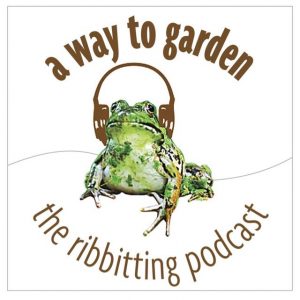
 MY WEEKLY public-radio current, rated a “top-5 yard podcast” by “The Guardian” newspaper throughout the UK, began its 14th yr in March 2023. It’s produced at Robin Hood Radio, the smallest NPR station throughout the nation. Concentrate domestically throughout the Hudson Valley (NY)-Berkshires (MA)-Litchfield Hills (CT) Mondays at 8:30 AM Jap, rerun at 8:30 Saturdays. Or play the Feb. 19, 2024 current using the participant near the best of this transcript. Chances are you’ll subscribe to all future editions on iTunes/Apple Podcasts or Spotify (and browse my archive of podcasts proper right here).
MY WEEKLY public-radio current, rated a “top-5 yard podcast” by “The Guardian” newspaper throughout the UK, began its 14th yr in March 2023. It’s produced at Robin Hood Radio, the smallest NPR station throughout the nation. Concentrate domestically throughout the Hudson Valley (NY)-Berkshires (MA)-Litchfield Hills (CT) Mondays at 8:30 AM Jap, rerun at 8:30 Saturdays. Or play the Feb. 19, 2024 current using the participant near the best of this transcript. Chances are you’ll subscribe to all future editions on iTunes/Apple Podcasts or Spotify (and browse my archive of podcasts proper right here).
[ad_2]
Provide hyperlink


